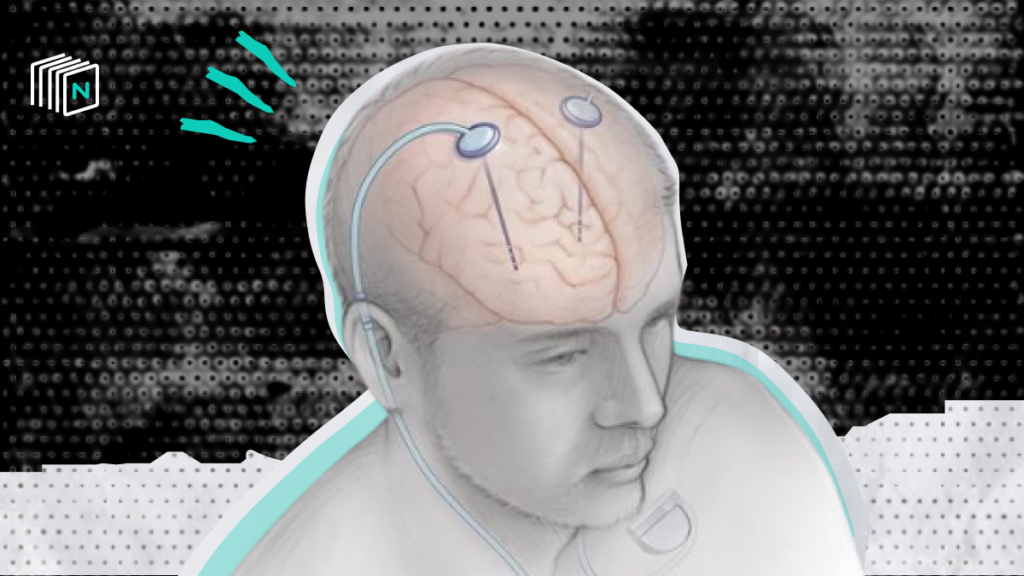Deep Brain Stimulation Shows Promise in Mapping Dysfunctional Brain Circuits

Imagine a future where individuals grappling with debilitating neurological disorders like Parkinson’s disease, dystonia, OCD, and Tourette’s syndrome can experience renewed hope and a significant improvement in their quality of life. This future may not be as distant as it seems, thanks to the groundbreaking potential of deep brain stimulation (DBS).
What is Deep Brain Stimulation (DBS)?
For individuals whose neurological conditions haven’t responded adequately to traditional medications, DBS offers a glimmer of hope. This surgical procedure involves implanting thin electrodes in specific areas of the brain responsible for controlling movement, emotions, or behavior. These electrodes deliver tiny electrical pulses, essentially acting as a “pacemaker” for the brain by regulating abnormal neural activity.
Unlocking Hope for Diverse Neurological Conditions:
A recent study published in Nature Neuroscience has unveiled the exciting potential of DBS in treating a wider range of neurological disorders than previously thought possible. This opens doors for individuals struggling with:
Parkinson’s disease: The hallmark tremors, stiffness, and slowness of movement can be significantly improved with DBS. This offers patients a chance to reclaim aspects of their daily lives and experience a renewed sense of independence.
Dystonia: Characterized by involuntary muscle contractions and abnormal postures, dystonia can cause considerable physical and emotional distress. DBS has shown promise in alleviating these symptoms, providing much-needed relief for individuals battling this condition.
Obsessive-compulsive disorder (OCD): Individuals with OCD experience persistent, intrusive thoughts and compulsive behaviors that can be incredibly debilitating. This study suggests that DBS may offer a new avenue for managing OCD by alleviating these symptoms and improving quality of life.
Tourette’s syndrome: Tics and vocalizations, often uncontrollable, can significantly impact the daily lives of individuals with Tourette’s syndrome. The study’s findings indicate that DBS has the potential to lessen the severity of these tics, offering hope for a more manageable future for those living with this condition.
Mapping the “Human Dysfunctome”:
The researchers behind the study employed a groundbreaking approach called “mapping the human dysfunctome.” This involved analyzing data from hundreds of patients with implanted DBS electrodes. By systematically analyzing this vast dataset, they were able to identify specific networks of malfunctioning brain circuits associated with each disorder. This crucial step paves the way for more targeted and personalized DBS therapy in the future.
Early Success Stories and the Road Ahead:
While the study primarily focused on data analysis, it also included real-life examples that showcased the potential benefits of DBS. One case highlighted a young woman with severe OCD who experienced significant improvement in her symptoms following targeted DBS therapy. This individual story, while encouraging, emphasizes the need for further large-scale studies to confirm the long-term efficacy of DBS across different populations and refine treatment approaches. Researchers will need to delve deeper to understand the optimal placement of electrodes, the most effective stimulation parameters, and the long-term impact on patients’ quality of life.
A Beacon of Hope for the Future:
This groundbreaking research represents a significant leap forward in the field of neurological treatment. By mapping the brain and identifying specific targets for DBS, scientists are paving the way for personalized therapies that can potentially improve the lives of countless individuals battling these debilitating conditions. While further research is crucial to establish the long-term safety and efficacy of DBS across various neurological disorders, this study undoubtedly shines a beacon of hope on the future of neurological treatment. It opens doors for further exploration and development of DBS, offering a promising path towards a future where individuals with these conditions can experience significant improvement and lead more fulfilling lives.
